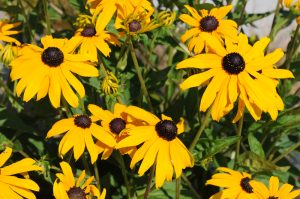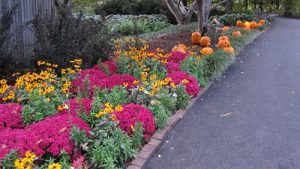You have probably seen this cheerful, radiant flower everywhere, but have you actually noticed it? Let’s take a closer look at one of Florida’s native treasures: the black-eyed Susan. This perennial blooming plant isn’t just a pretty face; it’s a vital part of our local ecosystem. In this series, we will uncover the origins, growing conditions, and importance of native species, like the black-eyed Susan, to support our environment and conserve resources.

The Value of Native Species
Native plants are often overlooked gems in the world of gardening. Native flora, like the black-eyed Susan, have adapted to Florida’s specific climate and soil conditions over time, making them resilient and low-maintenance additions to any garden. Yet, despite their numerous benefits, many gardeners still bypass them in favor of exotic species. Planting native flora is crucial for our environment and helps establish successful and sustainable gardens in Florida.
Origins of the Black-Eyed Susan
Beloved for its beautiful golden yellow petals, the black-eyed Susan (Rudbeckia hirta) originated from the eastern United States, including the sunny meadows of Florida. This resilient wildflower has adapted perfectly to Florida’s climate, thriving under the sunshine and occasional rain showers.

Growing Conditions and Characteristics
Black-eyed Susans flourish in full sun. They’re not picky about soil types, happily growing in well-drained soils from sandy to clay. With a USDA Hardiness Zone of 3-9, these beauties can handle a wide range of temperatures, making them a staple in many gardens across the state. Their growth habit varies from clumping to spreading, adding versatility to any landscape design.
Black-eyed Susans are low-maintenance perennials that can be used for establishing wildflower meadows, creating mixed borders, or planted in container gardens. Their golden yellow blooms attract pollinators and add a touch of sunshine to any Florida landscape.

Why Plant Native Species?
Picture this: a garden filled with native plants like the black-eyed Susan, buzzing with life and vibrant colors. Planting native species isn’t just about aesthetics; it’s about supporting local ecosystems. Native plants have evolved alongside local wildlife, providing essential food and habitat. Plus, they’re low maintenance, requiring less water, fertilizer, and pesticides compared to exotic species. By choosing natives, we can conserve water, reduce labor, and preserve resources.

The Detriment of Invasive Species
While native plants like the black-eyed Susan contribute positively to our environment, invasive species wreak havoc on ecosystems. These aggressive plants out-compete natives, disrupting natural balance and reducing biodiversity. In Florida, invasive species like Brazilian pepper trees and cogongrass threaten native habitats, crowding out native flora and fauna. By planting native species and avoiding invasive ones, we can protect our precious ecosystems and promote a healthier garden and environment. That being said, not all exotic plants are invasive or aggressive in nature. There is room for diversity in the home landscape and exotic plants can be a part of that diversity.
Keep in mind the first principle of Florida-Friendly Landscaping: Plant the right plant in the right place. Location is critical when considering exotic and native plants alike. Next time you’re planning your garden or landscape design, consider adding a splash of Florida sunshine with the black-eyed Susan. Not only will you be greeted by cheerful blooms year after year, but you’ll also be doing your part to support local biodiversity and conserve resources.
Conclusion
With their ability to attract pollinators and thrive in various garden settings, black-eyed Susans are a beautiful and sustainable choice for your garden. Native species make the ideal choice for gardeners seeking vibrant, low-maintenance, and biodiverse landscapes.
Have a question?
If you have any questions about gardening in Central Florida, please contact UF/IFAS Extension Pasco County at 352-518-0156. For more information on UF/IFAS Extension Pasco County Community Gardens, and how you can join one, visit http://sfyl.ifas.ufl.edu/pasco/.Supervising agent: Dr. Whitney Elmore.
Follow us!
We have several ways to connect. Visit our Facebook, Instagram, Eventbrite, Blogs, Florida-Friendly Facebook, & Website.
Visit our page for more tips and tricks on maintaining a home garden!
More resources:
- UF/IFAS Extension Pasco County
- Dr. Whitney Elmore’s Podcast: Rooted in Florida
- Extension Connection: Florida Friendly Landscaping
 3
3
